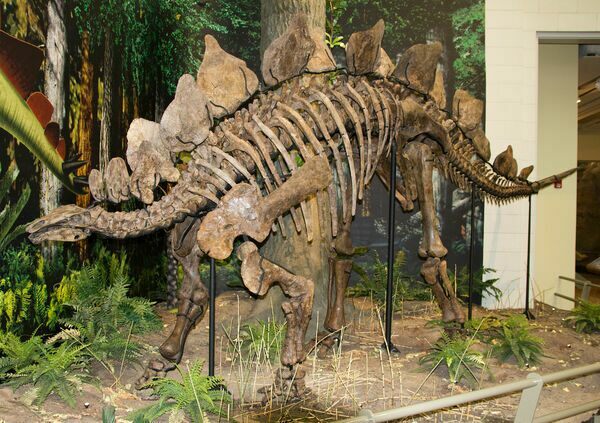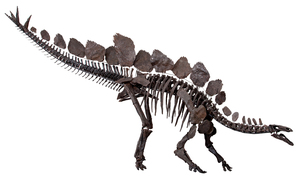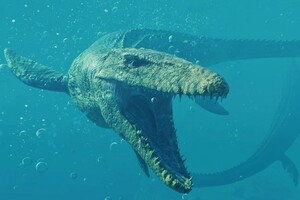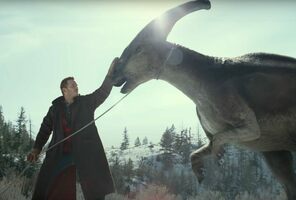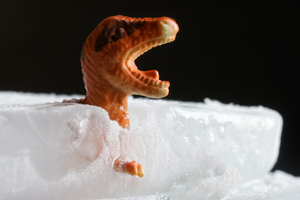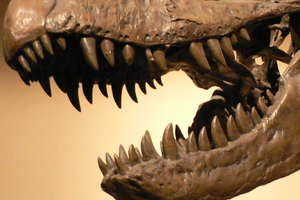Did Dinosaurs Have Two Brains? The Myth Of The Butt Brain
Famously, in the 1880’s a cast was made of a Stegosaurus’ brain case. It was discovered that despite its massive, 5 to 10 ton size, its brain was little bigger than a walnut. How could such a large animal function with a two ounce brain?
It was theorized that a large, hollow space discovered near the hip region of the spinal cord must contain a “second brain”. This second brain would help control the back half of the animal, possibly allowing it to react faster to predators. Similar hollow spaces were subsequently found in the rear ends of many other large, sauropod dinosaurs. Thus, the myth of the dinosaur butt brain was born.
While the two brain myth has persisted in popular culture, it is almost certainly incorrect. We don’t know for sure what was contained in the hollow space, but birds the closest living relatives of dinosaurs give us a good clue.
Modern birds have a similar hollow feature called a glycogen body at the base of their spinal cord. This space is stores energy-rich glycogen, but we don’t know its precise function. It might facilitate the supply of glycogen to the birds nervous system, it may function as an organ to help with balance, or it may have some other function entirely. But, it is certainly not a brain.
Contrary to popular myth, dinosaurs like Stegosaurus did not have a second brain in their butt.
It was theorized that a large, hollow space discovered near the hip region of the spinal cord must contain a “second brain”. This second brain would help control the back half of the animal, possibly allowing it to react faster to predators. Similar hollow spaces were subsequently found in the rear ends of many other large, sauropod dinosaurs. Thus, the myth of the dinosaur butt brain was born.
While the two brain myth has persisted in popular culture, it is almost certainly incorrect. We don’t know for sure what was contained in the hollow space, but birds the closest living relatives of dinosaurs give us a good clue.
Modern birds have a similar hollow feature called a glycogen body at the base of their spinal cord. This space is stores energy-rich glycogen, but we don’t know its precise function. It might facilitate the supply of glycogen to the birds nervous system, it may function as an organ to help with balance, or it may have some other function entirely. But, it is certainly not a brain.
Contrary to popular myth, dinosaurs like Stegosaurus did not have a second brain in their butt.
 Reviews
Reviews
